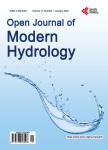Effect of Terrestrial LiDAR Point Sampling Density in Ephemeral Gully Characterization
Effect of Terrestrial LiDAR Point Sampling Density in Ephemeral Gully Characterization作者机构:Department of Geosciences Middle Tennessee State University Murfreesboro USA National Sedimentation Laboratory United States Department of Agriculture—Agricultural Research Service Oxford USA United States Department of Agriculture—Natural Resources Conservation Service Salina USA
出 版 物:《Open Journal of Modern Hydrology》 (现代水文学期刊(英文))
年 卷 期:2013年第3卷第1期
页 面:38-49页
学科分类:1002[医学-临床医学] 100214[医学-肿瘤学] 10[医学]
主 题:Ephemeral Gully Ground-Based LiDAR Soil Erosion Point Sampling Density Remote Sensing
摘 要:Gully erosion can account for significant volumes of sediment exiting agricultural landscapes, but is difficult to monitor and quantify its evolution with traditional surveying technology. Scientific investigations of gullies depend on accurate and detailed topographic information to understand and evaluate the complex interactions between field topography and gully evolution. Detailed terrain representations can be produced by new technologies such as terrestrial LiDAR systems. These systems are capable of collecting information with a wide range of ground point sampling densities as a result of operator controlled factors. Increasing point density results in richer datasets at a cost of increased time needed to complete field surveys. In large research watersheds, with hundreds of sites being monitored, data collection can become costly and time consuming. In this study, the effect of point sampling density on the capability to collect topographic information was investigated at individual gully scale. This was performed through the utilization of semi-variograms to produce overall guiding principles for multi-temporal gully surveys based on various levels of laser sampling points and relief variation (low, moderate, and high). Results indicated the existence of a point sampling density threshold that produces little or no additional topographic information when exceeded. A reduced dataset was created using the density thresholds and compared to the original dataset with no major discrepancy. Although variations in relief and soil roughness can lead to different point sampling density requirements, the outcome of this study serves as practical guidance for future field surveys of gully evolution and erosion.



